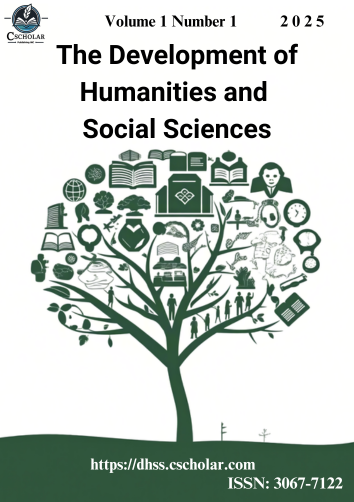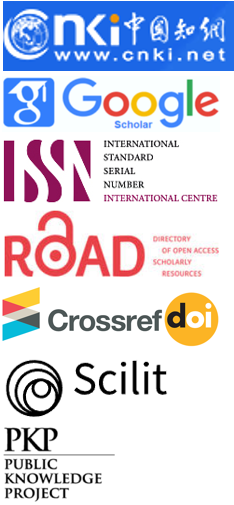Breaking Free from the Other: An Exploration of Mangy-Dog from Honwana to Ondjaki
DOI:
https://doi.org/10.71204/prjkb904Keywords:
Other, Mangy-Dog, Isaura, TraumaAbstract
This article examines the roles of Mangy-Dog and Isaura in Honwana’s We Killed Mangy-Dog and Ondjaki’s Não Choramos pelo Cão Tinhoso (We Don't Cry for the Mangy-Dog) through the perspective of the Other, reflecting on the enduring effects of colonial oppression and the trauma of inferiority. In both stories, Mangy-Dog and Isaura are symbolically linked by their shared status as marginalized figures, viewed as societal outcasts and defined as the Other. Honwana portrays the killing of Mangy-Dog as resistance to colonial violence, while Ondjaki reimagines the story, emphasizing the enduring trauma of colonialism on individuals and collective memory. Drawing from postcolonial insights of Fanon, Said, and Spivak on the construction of the Other, the article suggests that recognizing this trauma associated with the Other and understanding its lasting effects can help challenge this mindset, offering a potential path for resistance and transformation.
References
Afolabi, N. (2001). The Golden Cage: Regeneration in Lusophone African Literature and Culture. Africa World Press.
Alonso, C. P. (2007). The Wind of Change in Nós Matámos o Cão-Tinhoso. Ellipsis, 5, 67-85.
Al-Saidi, A. A. (2014). Post-colonialism Literature the Concept of self and the other in Coetzee’s Waiting for the Barbarians: An Analytical Approach. Journal of Language Teaching and Research, 5(1), 95-105.
Ashcroft, B., Gareth G., & Helen T. (2007). Other. In Key Concepts in Post-Colonial Studies. Routledge.
Bauman, Z. (2004). Modernity and Ambivalence. Polity Press.
Bhabha, H. K. (2012). The Location of Culture. Routledge.
Fanon, F. (1986). Black Skin, White Masks (C. L. Markmann, Trans.). Pluto Press.
Fanon, F. (1963) The Wretched of the Earth (C. Farrington, Trans.). Grove Press.
Gandhi, L. (2020). Edward Said and His Critics. In Postcolonial Theory: A critical introduction. Routledge.
Hoch, P. (1979). Brief introduction. In White hero black beast: Racism, sexism and the mask of masculinity. Pluto Press.
Honwana, L. B. (2014). Nós matámos o cão-tinhoso. Alcance Editores.
Honwana, L. B. (1969). We killed Mangy-Dog and other stories (D. Guedes, Trans.). Heinemann Educational Books Ltd.
Khalil, M. M. (2012). Memória e espacialidades reais e ficcionais em Nós choramos pelo cão tinhoso de Ondjaki. Revista Cerrados, 21(34), 192-206.
Laranjeira, P. (1995). A narrativa moçambicana e a poesia da FRELIMO. In Literaturas Africanas de Expressão Portuguesa. Universidade Aberta.
Leite, A. M., Owen, H., Chaves, R., & Apa, L. (2012). Nação e narrativa pós-colonial: Angola e Moçambique. Colibri.
Leonardeli, P. B., & Macedo, Y. M. (2022). Barreiras, enfrentamentos e humanização na Moçambique pós-colonial. Revista Ifes Ciência, 8(1), 1-10.
Mata, I. (1987). O espaço social e o intertexto do imaginário em Nós matámos o cão-tinhoso. In Literaturas africanas de língua portuguesa: Colóquio no Centro de Arte Moderna. Fundação Calouste Gulbenkian.
Mata, I. (1992). Pelos trilhos da literatura africana em língua portuguesa. Cadernos do Povo.
Mata, I. (2013). A crítica literária africana e a teoria pós-colonial: Reconversões. UEA.
Mondal, A. (2014). Postcolonial theory: Bhabha and Fanon. International Journal of Science and Research, 3(11), 2965-2968.
Mwangi, E. M. (2019) The Postcolonial Animal: African Literature and Posthuman Ethics. In K. Askew & A. Pitcher (Eds.). University of Michigan Press.
Ondjaki. (2007). Os da minha rua. Caminho.
Ricoeur, P. (2004). Personal memory, collective memory. In Memory, history, forgetting (K. Blamey & D. Pellauer, Trans). University of Chicago Press.
Roberts, F. A. (1995). Animals in African art: From the familiar to the marvelous. Museum for African Art.
Sartre, J.P. (1978). Being and nothingness: An essay on phenomenological ontology (H. E. Barnes, Trans.). Methuen & Co Ltd.
Sabine, M. (2004). Gender, race, and violence in Luís Bernardo Honwana’s Nós matámos o cão-tinhoso: The emasculation of the African patriarch. Lusophone Studies, 2, 23-44.
Said, E. (1991). Orientalism: Western conceptions of the Orient. Penguin.
Said, E. (1993). Resistance and opposition. In Culture and imperialism. Knopf.
Spivak, G. C. (1994). Can the subaltern speak? In P. Williams & L. Chrisman (Eds.), Colonial discourse and postcolonial theory. Columbia University Press.
Staszak, J.F. (2008). Other/otherness. In International encyclopedia of human geography.
Downloads
Published
Data Availability Statement
Not applicable.
Issue
Section
Categories
License
Copyright (c) 2025 Zhixin Hou (Author)

This work is licensed under a Creative Commons Attribution 4.0 International License.
All articles published in this journal are licensed under the Creative Commons Attribution 4.0 International License (CC BY 4.0). This license permits unrestricted use, distribution, and reproduction in any medium, provided the original author(s) and source are properly credited. Authors retain copyright of their work, and readers are free to copy, share, adapt, and build upon the material for any purpose, including commercial use, as long as appropriate attribution is given.





